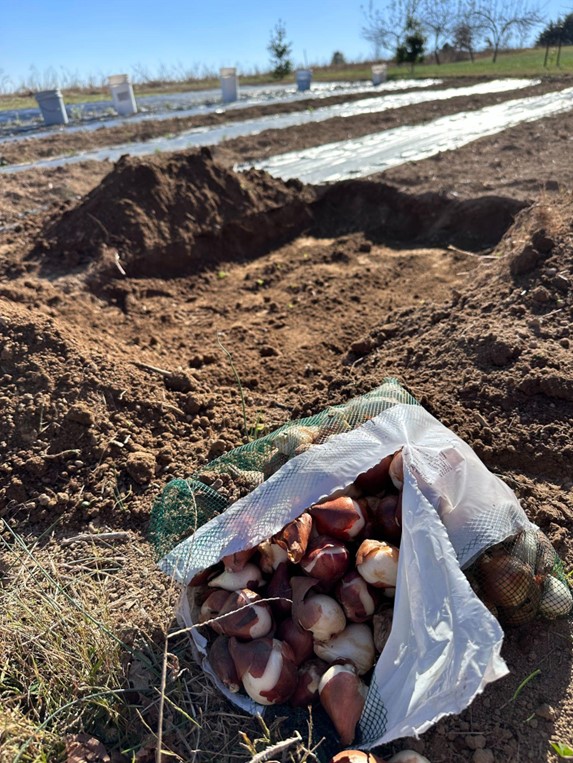Gardeners and flower farmers alike go to the extremes to savor their tulips, whether planting a parrot feather variety or the double peony varieties. Tulips are one of the classiest spring-flowering bulbs to date and offer detail to any garden style.
Here at the farm, we grow in multiple ways—one from the farm aspect and another for personal design. Both methods have their similarities and their differences. Allow me to touch on a few of the details in planting from a flower farmer’s standpoint and then for personal gardens.
Of course, when planting tulips, location is always first and foremost. Tulips require full sunlight for the best display. If that’s not feasible, make sure they will get at least 6 hours of direct, bright sunlight per day.

When planting in the field for a flower farmer, it’s hard work unless you have large equipment to make the task easier. So, I normally take a spade digging out trenches at least 6” deep, followed by using a garden hoe to push soil to the edge and rake over for later back-filling when bulbs are placed.
These trenches are long and wide in order to place a large amount of tulip bulbs in one space. They’re placed close together—side by side with not even an inch to spare. When it comes time to harvest, the bloom, stem, and bulb will all be lifted because will be no room for healthy growth to keep for another growing season.
When planting for a personal garden design, holes are dug one by one with a bulb planter tool or an auger bit attached to a drill. The holes are normally spaced according to a design or shape, creating curb appeal.
With both methods you’re using the same rules of location, depth and good drainage soil. Not only can you apply these tips for planting tulips but any other spring-flowering bulb as well.
It’s still November, garden friends, and as long as the soil hasn’t frozen, it’s still planting season! Actually, November is my choice of month to get bulbs in the ground as there is no concern for the bulbs to begin growing upward due to the warmth in the ground. You want to trigger root growth first.
Hoping this has you excited for the upcoming spring season. By planting bulbs, it gives gardeners/flower farmers great anticipation, reaping the rewards of planning ahead!
Pamela Anthony
Beehind Thyme Farm & Garden

